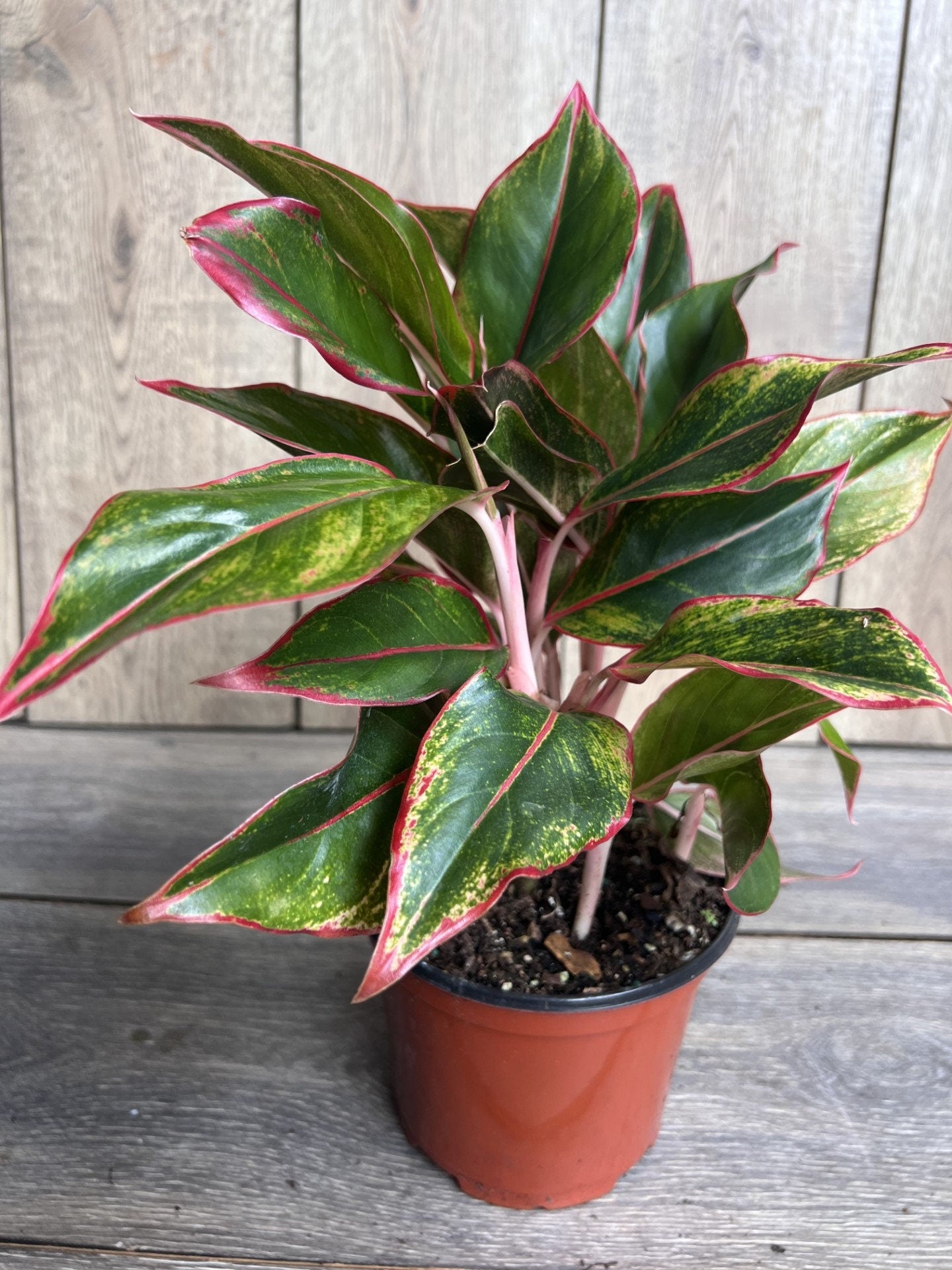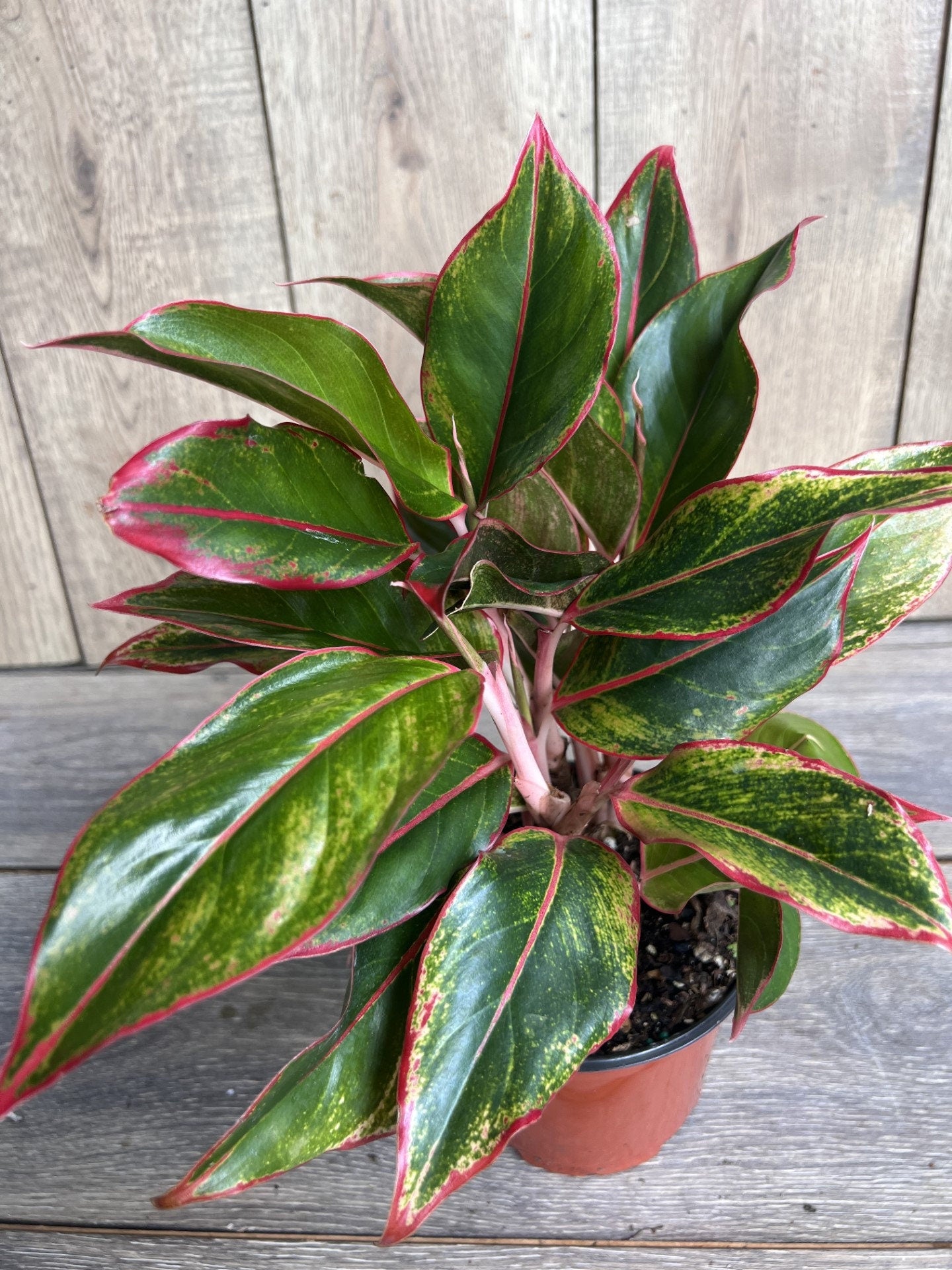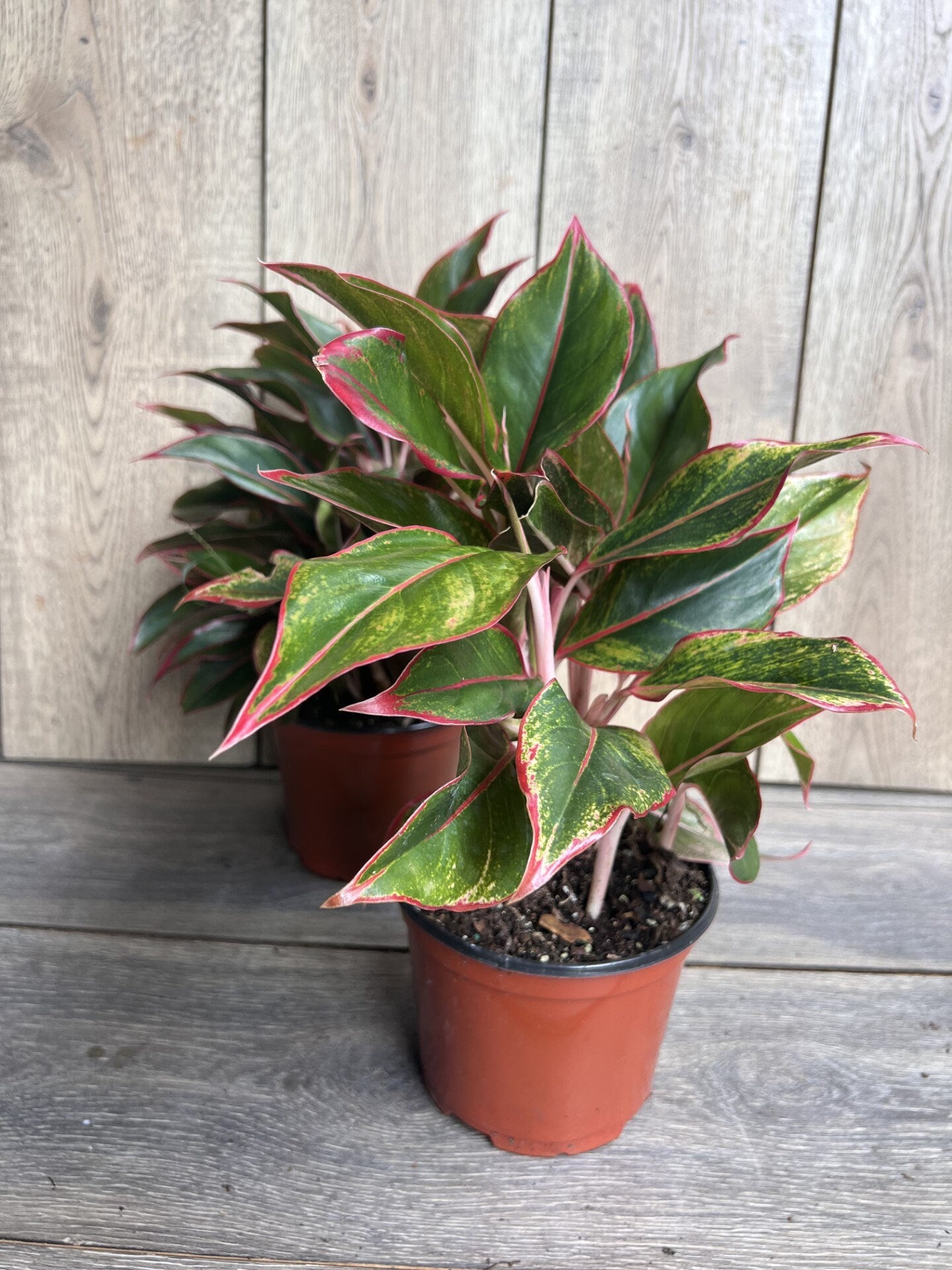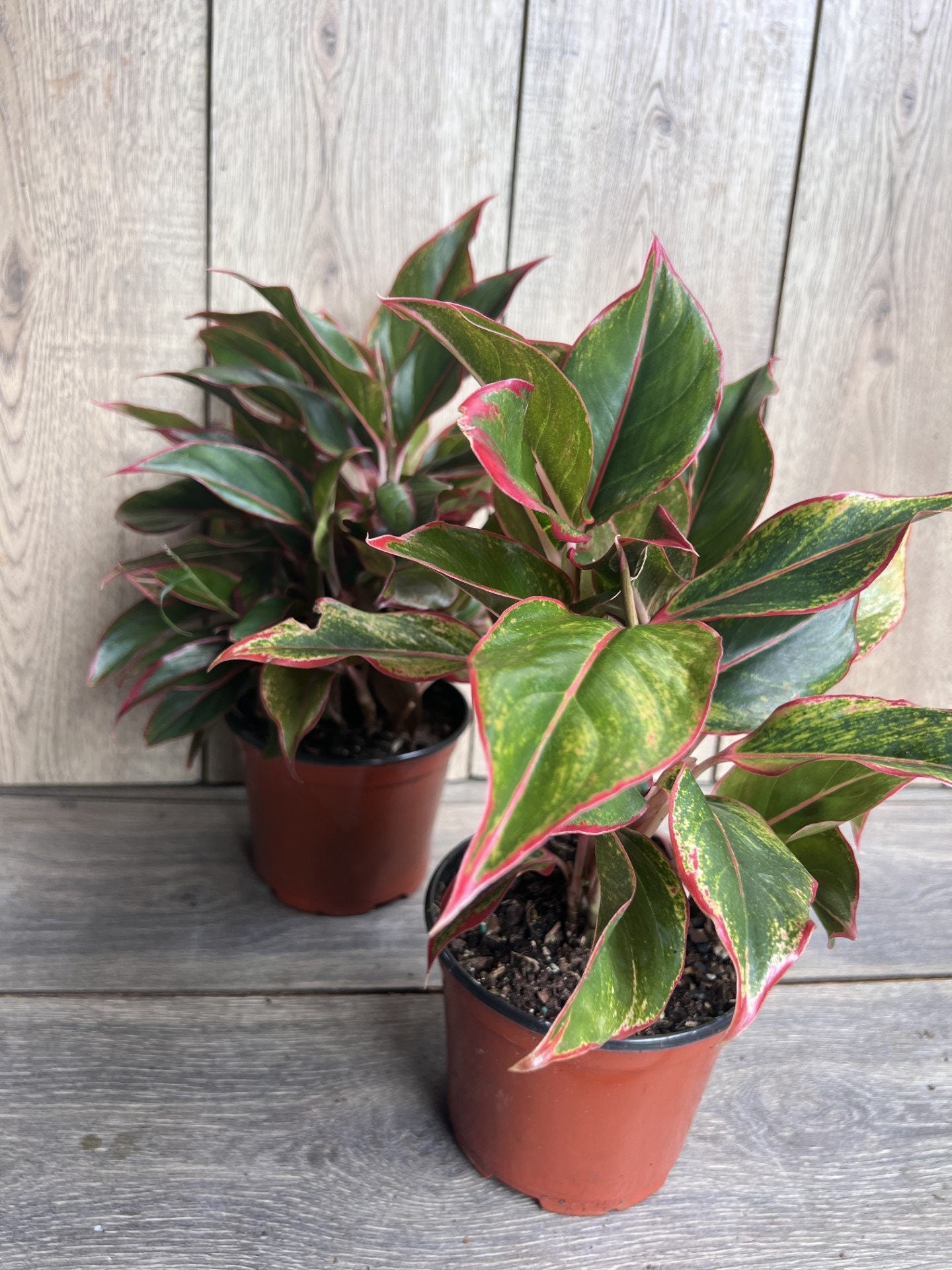1
/
of
5
Aglaonema Siam, Siam Aurora Aglaonema in 6" Pot
Aglaonema Siam, Siam Aurora Aglaonema in 6" Pot
Regular price
$24.33 USD
Regular price
$32.44 USD
Sale price
$24.33 USD
Unit price
/
per
Shipping calculated at checkout.
Couldn't load pickup availability
Note: You will receive One 6"pot of Aglaonema Siam similar to the pictures.
Aglaonema 'Siam' is a beautiful and elegant cultivar known for its striking, variegated leaves that feature a mix of deep green, silvery-gray, and cream-colored patterns. The broad, glossy leaves have a sleek, refined appearance with the variegation often concentrated along the veins, giving it a sophisticated, almost marble-like effect. Siam is an easy-to-care-for plant that thrives in low to medium light conditions, making it perfect for indoor environments. Its compact growth habit and low-maintenance nature make it a popular choice for homes and offices, adding a touch of tropical beauty and elegance with minimal effort.
Light Requirements
- Ideal Light: Aglaonemas thrive in medium to bright indirect light. They can tolerate low light but will grow slower and may lose some of their vibrant color, particularly in varieties with striking patterns or colors.
- Avoid Direct Sunlight: Direct sun can scorch the leaves, causing them to yellow or brown, especially in more delicate varieties.
Watering
- Watering Schedule: Water your Aglaonema when the top 1-2 inches of the soil are dry. It’s important not to let the soil stay soggy, as Aglaonemas are prone to root rot.
- Watering Method: Water thoroughly until the excess drains from the bottom of the pot. Make sure your pot has good drainage to prevent standing water.
- Overwatering Signs: Yellowing leaves or mushy stems can be a sign of overwatering. Let the soil dry out a bit between waterings, especially in winter when the plant’s growth slows down.
Temperature
- Ideal Temperature Range: Aglaonema prefers temperatures between 65°F and 80°F (18°C - 27°C), which makes it ideal for indoor environments.
- Avoid Cold: Keep your plant away from drafts or temperatures below 60°F (15°C). Cold temperatures can stress the plant and cause damage to the leaves.
Humidity
- Preferred Humidity: While Aglaonemas can tolerate average household humidity, they thrive in moderate to high humidity. Misting the plant, placing it on a humidity tray, or using a humidifier can help maintain a comfortable environment for your plant.
- Low Humidity: If the air is too dry, the plant might develop crispy leaf edges, so try to provide some extra moisture in the air during the winter months when indoor heating can cause dry conditions.
Soil
- Best Soil Type: Use a well-draining, lightweight potting mix, such as a standard houseplant mix or a mix specifically designed for tropical plants. Adding some perlite or orchid bark can improve drainage.
- Repotting: Aglaonemas are relatively slow growers, so they don't need frequent repotting. Consider repotting every 1-2 years when the plant outgrows its pot or if the soil becomes compacted.
Fertilizing
- Fertilizing Schedule: Feed your Aglaonema with a balanced liquid fertilizer (10-10-10 or similar) during the growing season (spring and summer). Fertilize once a month or every 4-6 weeks.
- Winter Care: Reduce or stop fertilizing in fall and winter, as the plant's growth slows down during these months.
Pruning and Maintenance
- Pruning: Aglaonemas typically don’t require much pruning. However, you can trim any yellowing or damaged leaves to maintain the plant’s appearance. If the plant becomes too leggy, you can prune back the stems to encourage new growth.
- Cleaning: Dusting the leaves with a damp cloth or giving them a gentle shower every so often will help the plant absorb light better and keep it healthy.
Common Problems & Pests
- Pests: While Aglaonemas are relatively pest-resistant, they can occasionally attract spider mites, mealybugs, aphids, and scale. Check for small, discolored spots, webs, or sticky residue on the leaves. If pests are present, treat with insecticidal soap or neem oil.
- Leaf Yellowing: Yellowing can be caused by overwatering, underwatering, or poor lighting. Check your watering habits and ensure the plant is receiving adequate light.
- Leaf Browning: Brown tips on the leaves can indicate low humidity, underwatering, or salt buildup from excessive fertilizer. Trim any brown tips off and adjust your care routine.
Share










